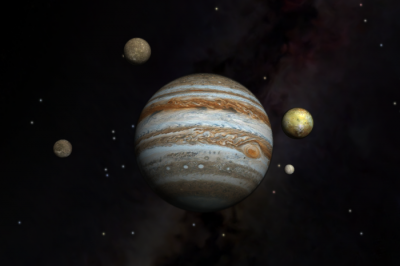 Space conceals many secret.
Space conceals many secret.
Automatic interplanetary scouts, the international space station… Thanks to them, we have the opportunity to see “family” photos of our Solar system, to see all the mysterious and extraterrestrial.
1. So it looks like sunset with the International space station. (Photo by Jeff Williams | NASA):

2. Jupiter, 27 Aug 2016. Jupiter is the largest planet in the Solar system, a gas giant. The mass of Jupiter 2.47 times the total mass of all other planets in the Solar system combined, in 317,8 times the mass of Earth and about 1000 times less than the mass of the Sun. (Photo JPL-Caltech | SwRI | MSSS | NASA):

3. Hurricane over Hawaii, August 29, 2016. (Photo by NASA Earth Observatory | Suomi National Polar-orbiting Partnership):

4. In orbit Sentinel-2A took the pictures in the Barents sea plankton blooms. The satellite was developed under the program “Copernicus”, which is aimed at environmental monitoring.
Plankton, which has, separately, of microscopic size, is the most common in the oceans. When plankton, otherwise known as the “grass of the sea”, is collected in a large mass, it produces a huge effect, as it is able to convert the marine inorganic compounds in organic matter due to the fact that carries photosynthesise pigments.
Made Sentinel-2A photos captures the moment of flowering of plankton in the Barents sea. The shows as a result of exposure to chlorophyll changes the natural color of the waters surrounding the process. At first glance, this may seem a watercolor drawing. But experts claim that the photo accurately reflects the color of the phenomenon. (Photo ESA):

5. View from the ISS and the launch of the Atlas V with a space truck Cygnus at Cape Canaveral in Florida. (Photo by NASA):
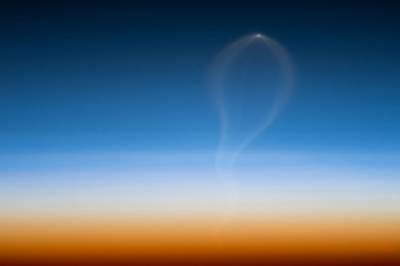
6. It looks like the full moon on the ISS. (Photo by Jeff Williams | NASA):

7. Dots and dashes. Is dunes on Mars. (Photo JPL-Caltech | Univ. of Arizona | NASA):

8. At the bottom of mount sharp on Mars. Sharp is a Martian mountain in the Gale crater. The height of the mountain is around 5 kilometers. Scientists believe that it was formed from the lake, millions of years of drying and again filling with water. (Photo JPL-Caltech | MSSS | NASA):
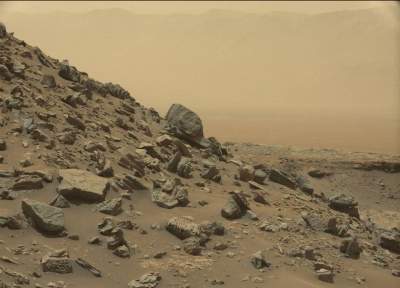
9. Martian landscape near mount sharp. (Photo JPL-Caltech | MSSS | NASA):

10. Traces Of The Rover. (Photo JPL-Caltech | NASA):

11. Sand dunes on Mars in the area of Olympia Undae. The features of the surface topography of Mars can be considered like a lunar impact craters and volcanoes, valleys, deserts and polar ice caps, like earth. (Photo JPL-Caltech | Univ. of Arizona | NASA):

12. The mass of Mars is 10.7% of the mass of the Earth. Mars has a period of rotation and the change of seasons similar to earth, but its climate is much colder and drier earth. The minimum distance from Mars to Earth is 55.76 million km Away. (Photo by NASA):
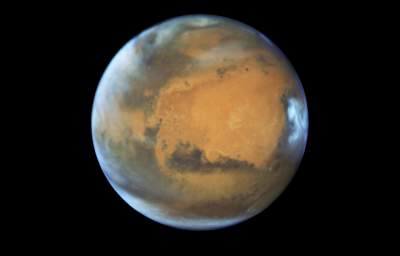
13. Moving on. Comet Churyumov — Gerasimenko taken from a distance of 329 km. the Comet has a porous structure and 75-85% of its volume is emptiness. (Photo by ESA | Rosetta | NavCam):
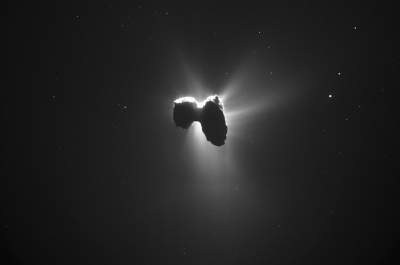
14. Found loss. September 2, 2016 the Rosetta spacecraft has found the lost Philae probe on the comet Churyumov-Gerasimenko. Such information shared by the European space Agency. Recall that the module Philae made a historic landing on the comet Churyumov-Gerasimenko on 12 November 2014. (Photo by ESA | Rosetta | MPS for OSIRIS Team):

15. Comet Churyumov — Gerasimenko taken from a distance is 29.9 km. According to the latest estimates, the mass of the comet is 1013 kg (10 billion tons). (Photo by ESA | Rosetta):
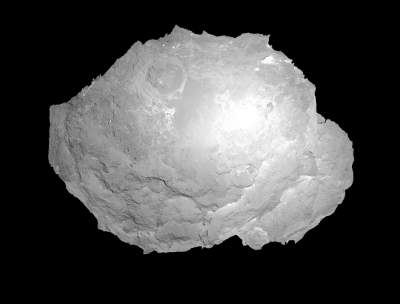
16. Beautiful photo of Jupiter. It is known that the Sun, the gradual exhaustion of its thermonuclear fuel increases its luminosity by about 11 % every 1.1 billion years, and as a result, its circumstellar habitable zone will move beyond modern earth’s orbit until it reaches the Jupiter system. Increase the brightness of the Sun during this period, warm up the moons of Jupiter, allowing to be released to the surface of liquid water, and thus create the conditions to sustain life.
And here’s windy: wind speeds on Jupiter can exceed 600 km/h. (Photo JPL-Caltech | SwRI | MSSS | NASA):

17. The Rings Of Saturn. Today we know that all four gas giants have rings, but Saturn they are the most noticeable. They are very thin. With a diameter of about 250 000 km the thickness is less than a kilometer. (Photo JPL-Caltech | Space Science Institute | NASA):

18. Yeah, and it was even more blowing wind speed on Saturn can reach places 1800 km/h, which is significantly more than on Jupiter.
In 1921, spread the rumor that Saturn lost its rings, and their particles fly in and Land. Anticipated event so stirred the minds of the people that published the calculations when the Ground will fall the particles of the rings. The rumor came from the fact that the rings simply turned edge-on to earth observers, and since they are very thin, the devices of the time they were impossible to see. People realized the “disappearance of the rings” in the literal sense, and that gave rise to the hearing. (Photo JPL-Caltech | Space Science Institute | NASA):
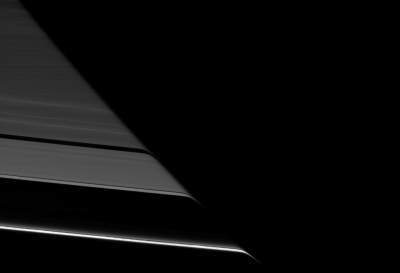
19. Saturn pimeta, 70km in diameter. All around the planet turns 62 currently known satellites. (Photo JPL-Caltech | Space Science Institute | NASA):

20. Double Eclipse — sharing the passage of the moon and the Earth on the solar disk, and 1 September 2016. (Photo by SDO | NASA):
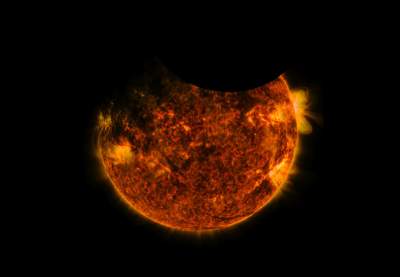
21. Neptune, may 16, 2016. Neptune is the eighth and farthest planet in the Solar system. Neptune is also the fourth diameter and the third the mass of the planet. The mass of Neptune is 17.2 times, and the diameter at the equator 3.9 times larger than the earth.
It’s cold and windy. Sometimes Uranus and Neptune are placed in a separate category, “ice giants.” The temperature of Neptune in the upper layers of the atmosphere close to -220 °C. In the atmosphere of Neptune is raging the strongest winds among the planets of the Solar system, according to some estimates, their speed can reach 2100 km/h. (Photo NASA):

22. Pluto. Originally, Pluto was considered to be normal planets, but it is now considered a dwarf planet. Pluto consists mainly of rock and ice and it is relatively small: it weighs less than the mass of the moon six times, and the volume — three times. The surface area of Pluto is approximately equal to the area of Russia. (Photo Johns Hopkins University Applied Physics Laboratory | Southwest Research Institute | NASA):



